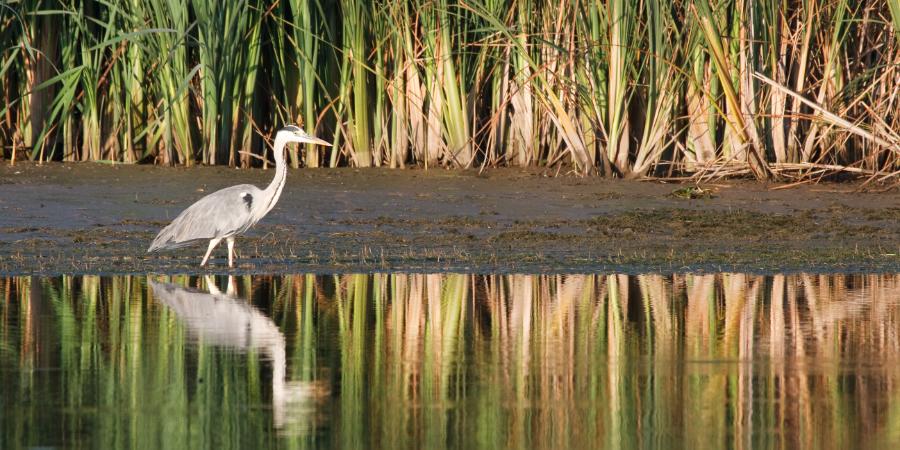
SCOTUS redefines WOTUS: The Impact of the Sackett Decision on Federally Regulated Wetlands and Waterways
Posted By: Terresa Bakner, Charles Gottlieb and Jordyn Conway
Introduction:
On May 25, 2023, the Supreme Court of the United States (SCOTUS) released an opinion, in Sackett v. EPA, seeking to clarify the definition of “Water of the United States” (WOTUS) for the purposes of federal regulation. [1] The decision, written by Justice Alito, confronts years of uncertainty and confusion regarding the “significant nexus” test that has been relied on by the Biden, Trump, and Obama administrations for determining which wetlands could be federally regulated by the Clean Water Act (CWA). The significant nexus test, formulated by Justice Kennedy in Rapanos v. U.S., required a demonstration that a wetland “significantly affect, the chemical, physical and biological integrity” of a regulated WOTUS to be regulated itself. [2] An earlier decision of the SCOTUS, SWANCC, found that isolated intrastate ponds and wetlands were generally not regulated under the Clean Water Act.
The significant nexus test was relied upon by the USEPA and the USACOE for many years to make case by case determinations that wetlands adjacent to, contiguous with or nearby to sometimes flowing streams, including ephemeral streams, were regulated as WOTUS themselves. At long last the opinion in Sackett now provides clear instructions on what is a WOTUS by holding that adjacent wetlands must be “indistinguishable” from WOTUS (streams containing flowing water which eventually connect to a Traditionally Navigable Water) due to a continuous surface connection. [3]
Sackett v. EPA:
Petitioners, Michael and Chantell Sackett, brought an action after the EPA sought to regulate wetlands on their property. The petitioners were seeking to fill the wetlands and the EPA argued that the wetlands were regulated, i.e., WOTUS, due to their close location near Priest Lake, a navigable, intrastate lake. The District Court awarded summary judgment to the EPA and the Ninth Circuit affirmed.
In this case, the Court sought to address what wetlands the CWA regulates. The wording in the majority opinion by Justice Alito is crystal clear -- "only those relatively permanent, standing or continuously flowing bodies of water 'forming geographic[al] features' that are described in ordinary parlance as 'streams, oceans, rivers and lakes" are capable of being "waters" under the Clean Water Act. [4] Moreover such "waters" should be “Traditionally Navigable Waters” or “Navigable in Fact.” [5]
The Court goes on to say that wetlands can qualify as waters of the US. However, they must be immediately adjacent and "indistinguishably part of a body of water that itself constitutes 'waters' under the CWA." [6]
The Court concludes as follows:
[T]he CWA extends to only those wetlands that are as a practical matter indistinguishable from waters of the United States. ...This requires the party asserting jurisdiction over adjacent wetlands to establish first, that the adjacent [body of water constitutes] ...waters of the United States, (i.e., a relatively permanent body of water connected to traditional interstate navigable waters); and second, that the wetlands have a continuous surface connection with that water, making it difficult to determine where the 'water' ends, and the 'wetlands' begins. [7]
Since a wetland may only qualify as a WOTUS if it is immediately adjacent to and indistinguishable from a continuously flowing stream that eventually connects to a Traditionally Navigable Water, the extent of federal regulation of wetlands will be substantially limited. Furthermore, the court has curbed the authority of the EPA by finding that any claimed power for regulation may only be acquired by “clear congressional authorization.” [8]
The Court arrived at this conclusion by examining the statutory language of the CWA and how it has historically been interpreted through EPA guidance and by case law. The opinion pointed out that since its inception, CWA regulations have been broadly construed developing a “system of ‘vague’ rules that depend on ‘locally developed practices’.” [9] The overbreadth and ambiguity of these regulations have placed property owners at great risk of criminal prosecution or severe civil penalties. [10] Additionally, CWA regulations were so expansive that even applying for a ACOE permit had become an exhaustive and costly process requiring an expert consultant to even consider seeking a jurisdictional determination from the ACOE. [11]
Several prior SCOTUS opinions have curbed CWA regulations but have danced around providing concise clarity on what is to be regulated as WOTUS. In Riverside Bayview, the court gave recognition to ACOE’s discretion to regulate wetlands abutting navigable water ways, finding that “the transition from water to solid ground is not necessarily or even typically an abrupt one.” [12] The proposition that only wetlands closely related to WOTUS could be regulated by the CWA was further demonstrated in the SWANCC case where the court found that the EPA lacked jurisdiction over isolated ponds, suggesting WOTUS is to be interpreted as navigable waters, significant to intrastate or foreign commerce. [13] Lastly, these opinions fed the resulting decision in Rapanos v. U.S., where the court further underscored the criteria for regulated wetlands as those “with a continuous surface connection” to the WOTUS, such that it is unclear where the wetlands start and end in relation to the WOTUS. [14] Despite the directness of the plurality opinion in Rapanos, the EPA regulations erroneously adopted the “significant nexus” test expressed in Justice Kennedy’s concurrence. [15]
What this means for New Yorkers:
In addition to clarifying the definition of WOTUS and its applicability to wetlands, the opinion in Sackett notes that the “[r]egulation of land and water use lies at the core of traditional state authority.” [16] In realigning the CWA’s geographical reach, the court identifies the States’ role in regulating water resources to be significant and that the current expansive jurisdiction of the EPA jurisdiction undermines rights reserved the States. [17] Now that some relief from federal regulation of wetlands may be on the horizon due to the Sackett’s case, what does this mean for property owners in New York State?
The NYS Legislature has recently amended the Environmental Conservation Law, Article 24, to expand the State regulation of freshwater wetlands. The New York State Department of Environmental Conservation (“NYSDEC”) previously regulated only wetlands that were 12.4 acres in size and that were mapped (including very rarely designated "Wetlands of Unusual Local Importance").[18] The new legislation did away with the maps as a regulatory feature as of January 1, 2025. Further, as of January 1, 2025, the NYSDEC will be able to regulate wetlands of any size providing they identify the wetlands as having "unusual importance." [19]
The features cited in the legislation to be determinative of whether the wetlands are of "unusual importance" is comprehensive. Among other things, some of the factors considered include flooding, adjacency to urban areas, and habitats of endangered species.[20] The legislation even explicitly mentions vernal pools; small temporary features that only appear in the spring. [21] In other words, the criteria and factors used to determine the NYSDEC’s jurisdiction will be expansive and when NYSDEC adopts the new regulations, it is likely that they will seek to render many wetlands not previously regulated as wetlands of "unusual importance". The Sackett decision will only encourage NYSDEC to seek to regulate those wetlands that escape ACOE control. In addition, those seeking to develop properties in New York must also carefully review any local legislation that may regulate wetlands, as those are often stricter than State or Federal regulation.
So, assuming that the NYS Legislature does not try to speed up the implementation of the existing legislation by adopting new legislation in response to the Sackett decision, there will be a small window of opportunity for some property owners to fill in wetlands that are neither regulated by the State or local municipalities because they are no longer regulated by the federal government, subject, of course, to all of the other rules and regulations that pertain to development in the State.
Contact Whiteman Osterman & Hanna Today
If you have questions regarding this recent opinion, don’t hesitate to get in touch with our Environmental and Land Use and Development Practice Group to see how the team at Whiteman Osterman & Hanna may be able to assist.
[1] Sackett v. EPA, No. 21—454 (May 25, 2023).
[2] Rapanos v. United States, 547 U.S. 715, 737 (2006).
[3] Sackett v. EPA, No. 21—454 (May 25, 2023).
[4] Sackett v. EPA, No. 21—454, slip op. at 14 (May 25, 2023).
[7] Sackett v. EPA, No. 21—454, slip op. at 22 (May 25, 2023).
[13] Solid Waste Agency of N. Cook Cnty. v. U.S. Army Corps of Engineers, 531 U.S. 159, 163 (2001).
[14] Rapanos, at 755, 742 (2006).
[16] Sackett, No. 21—454, slip op. at 23 (May 25, 2023).
[18] N.Y. ECL § 24-0507 (McKinney 2023).
[20] N.Y. ECL § 24-0507 (9) (McKinney 2023).
[21] N.Y. ECL § 24-0507 (9)(g) (McKinney 2023).

